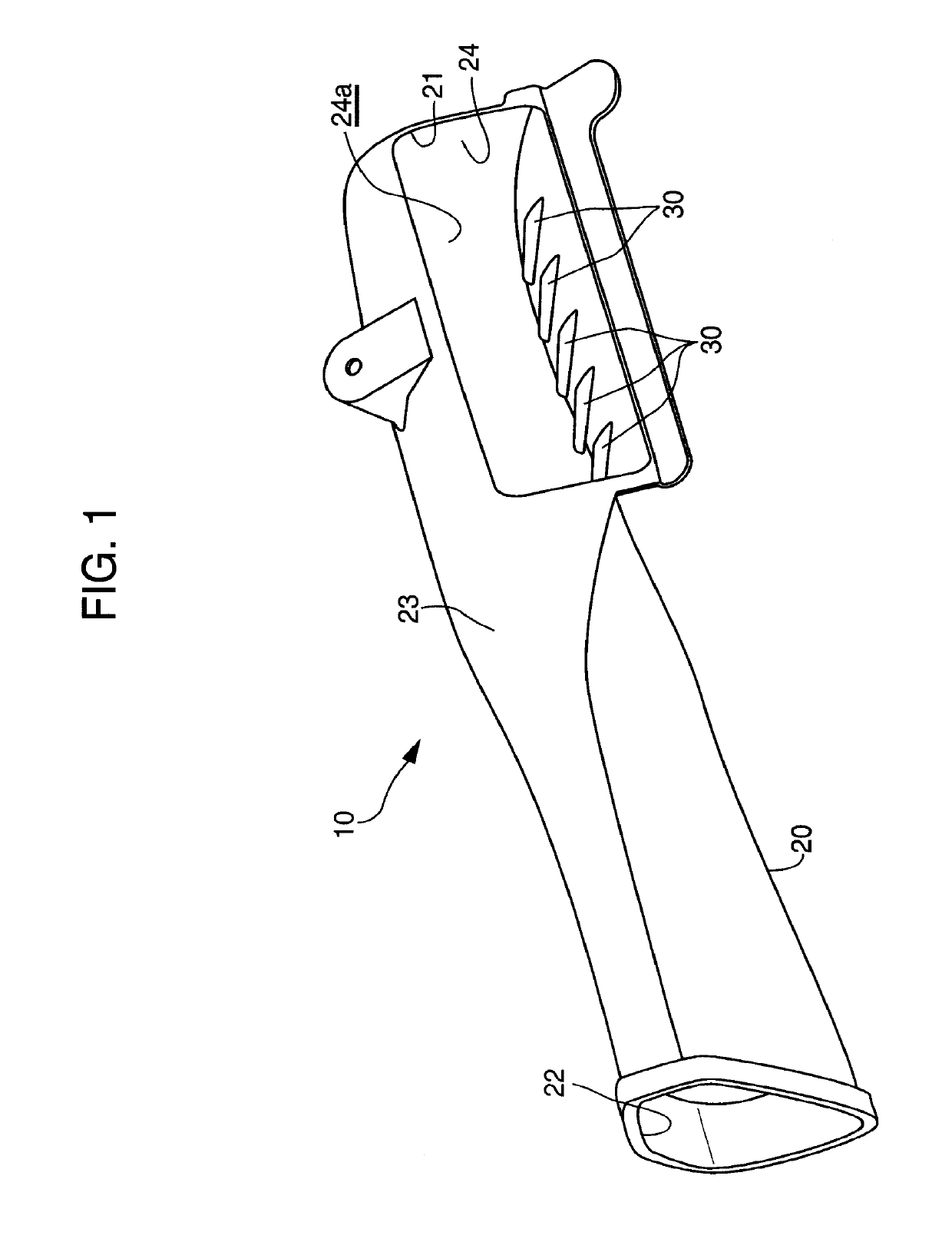Duct structure
a technology of duct structure and duct head, which is applied in the direction of charging feed system, lighting and heating apparatus, combustion engines, etc., to achieve the effect of suppressing the flow separation from the inner surface of the duct at the downstream of the fin, and reducing the pressure drop at the fin
- Summary
- Abstract
- Description
- Claims
- Application Information
AI Technical Summary
Benefits of technology
Problems solved by technology
Method used
Image
Examples
embodiment 1
[0080]Structures of portions unique to Embodiment 1 will be explained.
[0081]In Embodiment 1, the fin 30 includes a top surface 32 shown in FIG. 9 and a pair of side surfaces 33 having side surface portions 33b parallel with each other shown in FIG. 10.
[0082]As illustrated in FIG. 9, the top surface 32 of the fin includes an upstream end and a downstream end. The upstream end and the downstream end of the top surface 32 may coincide with the upstream end 30a and the downstream end 30b, respectively, of the fin in position in the longitudinal direction of the fin. The top surface 32 of the fin extends from the upstream end 30a of the top surface 32 to the downstream end 32c of the top surface 32 of the fin in the longitudinal direction of the fin. The downstream end 32c of the top surface 32 of the fin is spaced away from the inner surface 24 of the duct 20.
[0083]A cross-sectional configuration of the top surface 32 of the fin taken along a flat plane perpendicular to the longitudinal...
embodiment 2
[0098]Next, structures of portions unique to Embodiment 2 will be explained.
[0099]In Embodiment 2, as illustrated in FIGS. 16 and 17 the thickness of the fin 30 is gradually decreased in a direction away from a root of the fin in the height direction of the fin.
[0100]As illustrated in FIGS. 16 and 17, the fin 30 may include an angled ridge (hereinafter, a ridge) 36 at a higher end of the fin in the height direction of the fin. Contrarily, as illustrated in FIGS. 18 and 19, the ridge at the higher end of the fin may be replaced by a curved surface or a flat plane. In the explanation about Embodiment 2 below, the fin 30 having the ridge 36 will be taken as an example of the fin.
[0101]As illustrated in FIG. 14, the ridge 36 of the fin includes an upstream end and a downstream end 36c. The upstream end and the downstream end of the ridge 36 of the fin may coincide with the upstream end 30a and the downstream end 30b, respectively, of the fin in position in the longitudinal direction of ...
PUM
 Login to View More
Login to View More Abstract
Description
Claims
Application Information
 Login to View More
Login to View More - R&D
- Intellectual Property
- Life Sciences
- Materials
- Tech Scout
- Unparalleled Data Quality
- Higher Quality Content
- 60% Fewer Hallucinations
Browse by: Latest US Patents, China's latest patents, Technical Efficacy Thesaurus, Application Domain, Technology Topic, Popular Technical Reports.
© 2025 PatSnap. All rights reserved.Legal|Privacy policy|Modern Slavery Act Transparency Statement|Sitemap|About US| Contact US: help@patsnap.com



